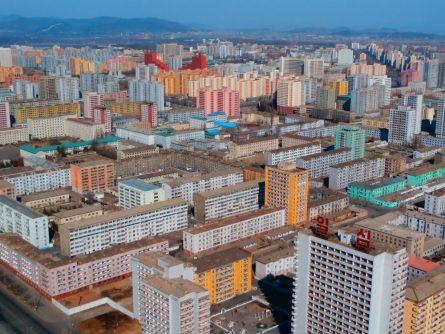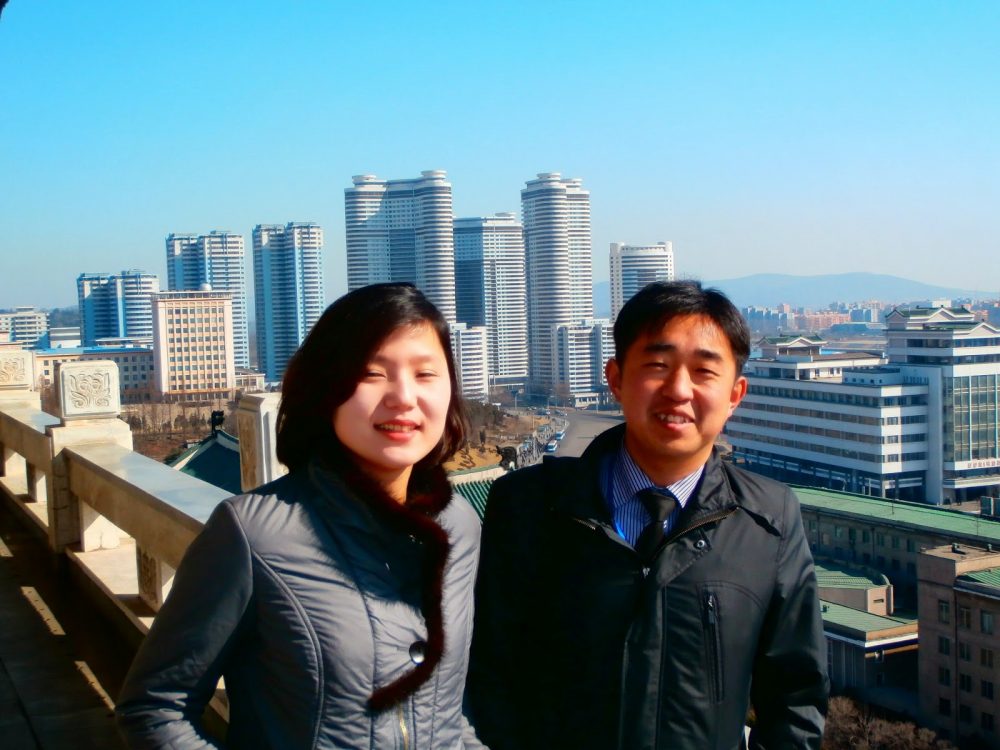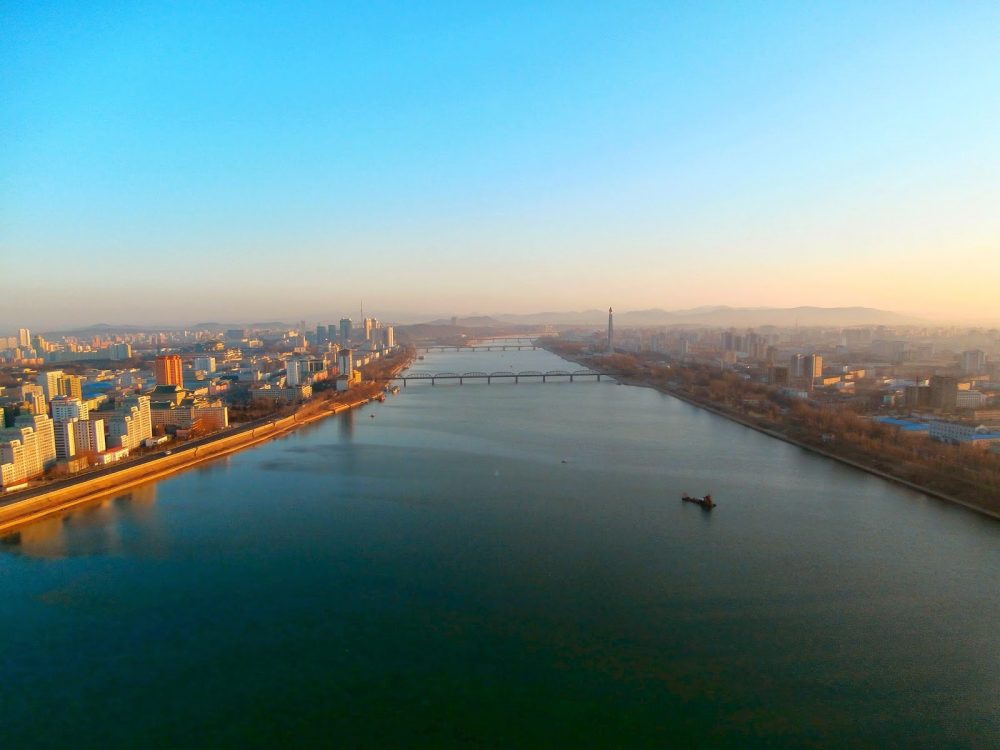Pyongyang; the capital of North Korea is a fascinating city
Pyongyang, North Korea, is an astonishing city to visit

The DPRK is, in a word, heroic. One senses this immediately stepping out of the station into an eerily quiet city centre. The population of the city is given variously as between 1 and 3 million souls, but it is always hard to figure out where they are. There are few motor vehicles, and surprisingly few bicycles.
North Korea is run to a philosophy of “Juche”, or self-sufficiency, and although they are not terribly good at it, it seems, it is a guiding ethos and one that was to underpin everything that we saw and did while in the DPRK.
I was expecting to see bicycles swarming in the manner of Chinese cities of the 1980s, but no … the city’s streets were sparsely populated. In fact, they were so empty that one could not help wondering where on earth the 1.5 million Pyongyangers were all of the time.
We were met at the station by our guides; they had little difficulty in spotting us, and the redoubtable Mr. Kim Won Ik and the delightful Miss Han Hyang Hui whisked us away and off into the DPRK’s unusual capital.

The city is new. Obliterated in the Korean conflict, it has risen from nothing into quite a showpiece. Liberally adorned with massive statues of the Great and Supreme leaders, public buildings the size of small villages and as astonishing supply of museums and massive squares. It is not unattractive in an overwhelming sort of way, but for the casual visitor, alas, one is kept on a very short rein.
Accommodation for the first two nights was at the massive and uncompromising Yanggdko hotel, located on a protective island in the middle of the Taedong River and towering 47 stories above the city.
There are 1001 rooms, although nobody could explain how this curious number came to be, all fairly chilly at this time of year, and by and large unoccupied; there are massive restaurants to accommodate the collective hunger of these visitors, a bowling alley, bars, a tea room and everything on a heroic scale.
Puzzling at the curious number of rooms, I wondered if it was perhaps it is because 1001 is divisible by 143, I had the suspicion that that I was ebbing at least some way into this parallel universe. It was, however, a riddle, and neither the first nor last.
Awakening in the morning to a beautiful blue sky, I was unnerved by the silence. Listening from my 40th floor window, I could hear the wildly enthusiastic songs exhorting workers at a factory far below to pull their socks up and produce for the Dear Leader.
These songs were an integral part of life, and all day we heard either the hysteria of encouragement (or should I say hectoring) or an endless selection of karaoke, offering a selection of revolutionary songs curiously written in the style of contemporary lounge music.

It was and is odd.
However, odd does not mean unpleasant, and nor does it invite patronising aphorisms. Pyongyang is the showpiece of the Democratic Peoples’ Republic of Korea, and we arrived on Election Day; soldiers were dancing in the street wearing medals by the balcony full, red flags were being waved, and a tide of emotion flooded the city.
There was a palpable sense of hysterical passion although it did seem to be a huge waste of heroism, but true to form and the pundits, the Dear Leader received 100% of the votes cast with an astonishing turnout of 100%.
There, “That’s democracy for you” our guides explained, “It is an expression of the love and devotion that all Koreans feel for Kim Jung On”. Well, they would say that, wouldn’t they?
Unlike most places that one visits, Pyongyang grabs you by the neck for recognition. It is said to have a million inhabitants, but we saw little sign of them as we were taken through the city. Were they there? Who knows.
Perhaps; anyhow, fortified by a delicious breakfast of eggs, bean sprouts, yoghurt and toast, we ventured outside to a day of sightseeing.
